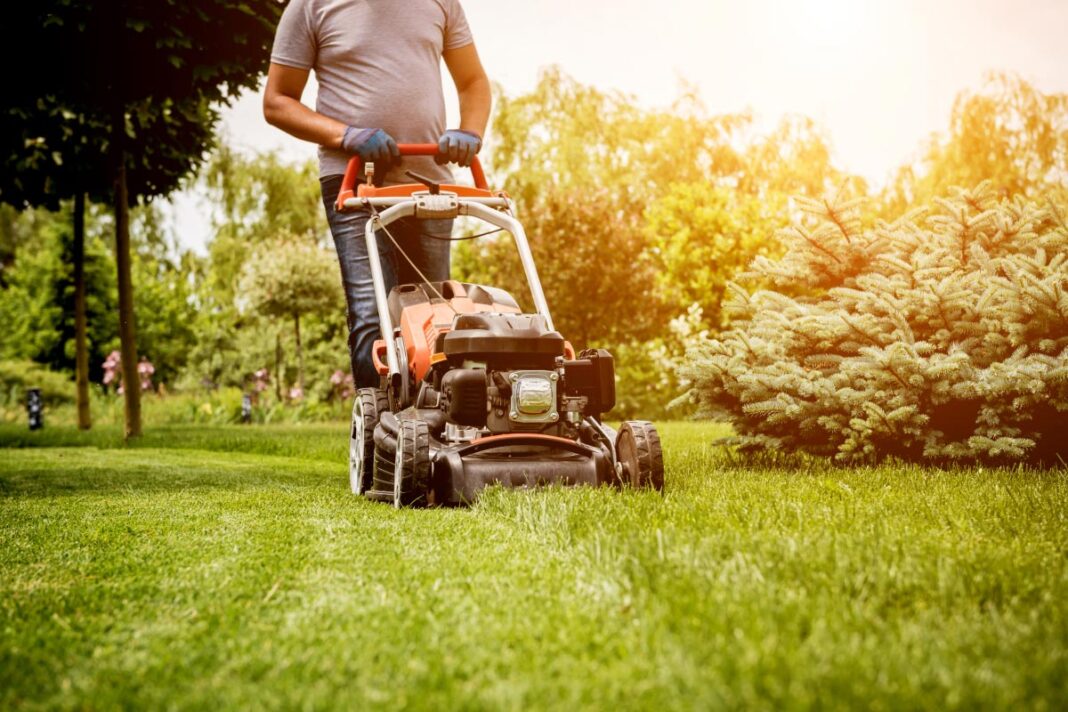Summer is one of the best times to enjoy outdoor time on the lawn, as the season provides long, warm days perfect for activities and relaxation. But what most people fail to realize is that the summer heat can take a toll on the lawn. A poorly maintained lawn can lead to pest infestations and may eventually affect the property value. This highlights the importance of learning the different ways to maintain the lawn in the summer.
1) Conduct a soil test
Checking the lawn’s condition is among the top summer lawn care tips. A soil test involves getting a testing kit from a garden store. Alternatively, one can contact the agricultural office for professional and accurate testing. The results usually include the soil’s pH and nutrient levels. To send the samples out for testing:
- Collect soil samples from the lawn.
- Take out the most visible debris.
- Spread the sample on a newspaper and let it dry. Before this, disperse the clumps.
- Place the samples in an airtight box and label the container clearly with information such as the location and depth.
- Keep the box in a dry area until ready to go to the lab.
2) Remove excess thatch
Thatch is a layer of dormant grass, roots, and other materials that builds up between the soil and the lawn. When this layer builds thicker, about half an inch in warm-season grasses, it can stop nutrients, sunlight, air, and water from reaching the soil and roots. So, it is important to remove excess thatch from the area to improve the overall appearance and strength of the lawn. Thatch control helps with better airflow, water absorption, and nutrient intake.
3) Mow taller to create shade
Mowing the grass can significantly help keep it drought-resistant. The sun’s rays can dry the soil quickly, damaging the entire lawn. So, the grass should be mowed taller to shade the soil, reduce evaporation, and promote deeper roots to handle drought and high temperatures. Also, taller grass can be visually more appealing. Sharp mower blades can make clean cuts and curb unwanted stress on grass. Cut less than a third of the grass blades’ length each time. Leave clippings on the lawn as mulch as they become an additional source of moisture and feed the lawn nutrients. This is great for improving its immunity against the blazing heat in the summer months, boosting its ability to fight the summer heat and grow healthy.
4) Water the lawn appropriately
Following the appropriate lawn watering guidelines is essential for a lush green lawn. Remember to water at the right times of the day and for the appropriate amount of time. Watering your plants between 5 a.m. and 9 a.m. during the summer is highly recommended, especially as higher temperatures can increase the risk of diseases and critters. Controls lawn pests in the summer by not watering the lawn in the evening. A moist environment left overnight can attract pests. In unavoidable circumstances, water the plants around 6 p.m., but with a drip irrigation system. This can touch the grassroots without affecting the greenery.
5) Go with slow-release fertilizers
Fertilization is one of the best summer grass care essentials for strong, healthy grass, but excessive application can stress the lawn. A slow-release fertilizer gradually nourishes the grass with nutrients. The technique prevents weak or rapid growth. Do not over-fertilize in hot summers; the excessive heat may leave behind yellow or brown patches on the lawn.
6) Manage lawn foot traffic
Hosting a barbecue, a soccer game, or other backyard activities is fun. However, higher foot traffic can press the grass and soil together. Remember to balance functionality with care to avoid stress on the lawn. For example, high-traffic activities, like sprinkler play or lawn games, can be moved to a different area of the lawn. Also, make pathways, such as with stepping stones, or create designated paths to ensure everyone uses the trail and keeps away from weak spots.
7) Remove the weeds
Stressed lawn conditions, like those in the summer, make the perfect conditions for weeds to thrive. Since weeds can damage other plants in the garden, it becomes necessary to remove them. Frequently pull them out by hand before they grow uncontrollably and spread seeds. Remember to spot-treat and apply targeted herbicides for weeds that are stubborn, such as dandelions or crabgrass. Pick products that are safe for the specific grass type.
8) Aerate and Overseed
If a lawn struggles with compacted soil or thinning grass, aerate the soil. The aeration process helps the lawn better absorb water and nutrients, allowing better and stronger root growth. To make aeration easier, rent a core aerator to break up compacted soil. This pulls up plugs of soil from the ground to create vents, which allows the grassroots access to everything they need to thrive. Also, remember to overseed the lawn. This summer lawn mowing tip helps restore damaged areas. Overseed the lawn in the spring through early summer.
9) Clean up pet litter
A family pet or strays may often spend time on the lawn playing or use it to do their business. It is important to clean up after them to avoid bald spots on the lawn. If grass starts to wither in a spot due to pet urination, flush the space with water to dilute the urine in the soil. Alternatively, create a pebbled or mulched space and train the pet to use it for bathroom breaks. Lastly, waste must always be collected and disposed of properly.


